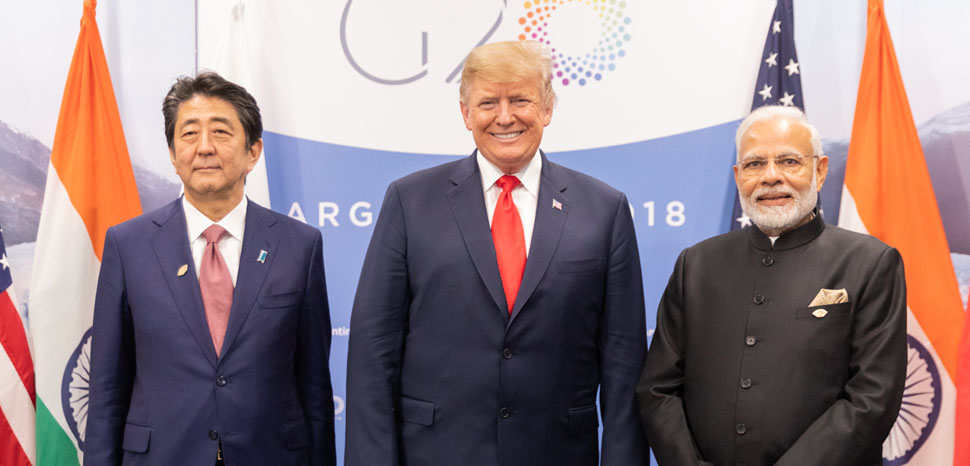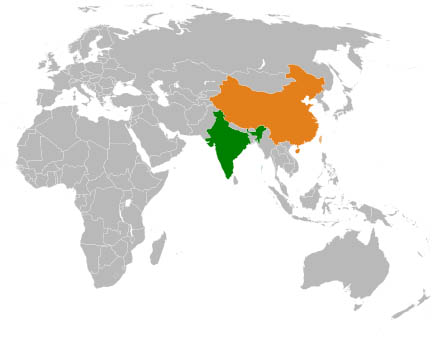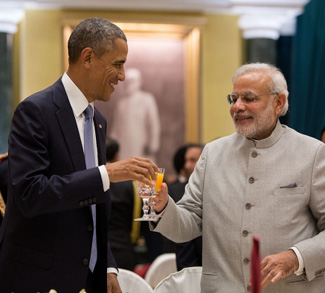In academic and professional settings, India’s foreign policy has long been synonymous with the concept of “nonalignment” which has aspired to prevent India from joining any major power bloc or engaging in global geopolitical competition. Jawaharlal Nehru—the first prime minister of India and the ardent champion of nonalignment—set the foundations of India’s foreign policy based on country’s colonial past and his fear of an arms race that would empty New Delhi’s treasury. Additionally, his sympathy toward the Third World and hopes for a more multilateral international environment further contributed to the institutionalizing of the policy of nonalignment. But like most leaders before and after him, Nehru soon faced the cold-blooded realities of geopolitics, which exposed the inherent naivete of all the attempts to eliminate power politics from global affairs. The humiliating defeat in the hands of the Chinese in 1962 questioned Nehru’s idealist principles to the core. India lost the war, and then, to add insult to injury, the majority of nonaligned countries did not bother to condemn China.
Although Nehru’s conduct of foreign policy was passed to his successors, the nonalignment policy has since exhausted itself. After all, India developed nuclear weapons to counterbalance China, later placed itself under Moscow’s security umbrella during the premiership of Indira Gandhi, and then found itself tackling the dilemma of America’s engagement in the region after the Soviet Union invaded Afghanistan. The dissolution of the Communist Empire further propelled New Delhi to adopt a more realist foreign policy. For the first time—despite the risks of upsetting its Muslim population—it established relations with Israel to get America’s attention. New Delhi also toned down its Arab solidarity rhetoric due to the alignment of many Arab countries with Pakistan.
Ever since, India has pursued a more-or-less sober foreign policy free of emotional constraints and the Nehruvian legacy of colonial obsession. The recent years have witnessed the subtle alignment of Washington and New Delhi. In light of the Sino-Russian rapprochement and an increasingly belligerent Pakistan, India will seek closer relations with Washington to counterbalance China on one hand and restrain Pakistan’s terrorism on the other.
The People’s Liberation Army Navy (PLAN) is recording impressive breakthroughs with its naval build-up. Having outposts in Africa, the Chinese navy is building the capacity to secure the key lanes of communications passing through the Indian Ocean. For India this will be a major obstacle as the growing Chinese submarine fleet will encircle the Indian subcontinent not only dominating the South Asian waters but creating a strategic vulnerability for New Delhi should the territorial disputes in the Sino-Indian border regions flare up again. India will remain hesitant to openly antagonize China, but will delicately align itself with the United States. This enhanced cooperation will most likely come to fruition in the maritime domain as India and United States will become more interdependent when countering China’s naval expansion into international waters. The U.S. Navy will be preoccupied with containing the growing ambitions of the PLA Navy in coming years, and India is poised to become a useful partner. This cooperation is highly unlikely to become a full-fledged alliance in the foreseeable future for various reasons, but New Delhi cannot afford to not accept Washington’s help given Beijing’s assertive military swaggering. Consider New Delhi’s recent refusal to intervene in the Maldives in February of 2018 when the political turmoil begged for India’s intervention. President Abdulla Yameen ordered the arrest of several judges as well as forced former president into exile. For the record, India intervened militarily in 1988 in the Maldives to assist the government in holding onto power. It is true, that in the first case (1988) the invitation came from the sitting president as a former Indian Army lieutenant colonel rightly argues. Last year, the calls for Indian intervention came from an exiled Indian opposition figure. Diplomatically, India’s refusal to intervene was arguably prudent but it also demonstrated China’s deterrence capabilities. Since Yameen took power in 2013, the country has been accepting tremendous loans from Beijing and is being integrated into China’s geo-strategic project. Additionally, as India was contemplating intervention, China’s Global Times published an op-ed stating that “If India one-sidedly sends troops to the Maldives, China will take action to stop New Delhi. India should not underestimate China’s opposition to unilateral military intervention.” This message was clearly taken seriously in New Delhi.
US-India cooperation will increase in combating terrorism as well. Both nations have experienced tragedies at the hands of radical Islamists, creating a mutual sympathy. India continues to struggle with Pakistan’s state-sponsored terrorism. Among the groups that have close ties with Pakistan’s Inter-Services Intelligence is Lashkar-e-Taiba (LeT), which came under the international spotlight in the aftermath of the devastating Mumbai attacks of 2008. Both Washington and New Delhi have expressed their deep concerns on Islamabad’s inaction regarding terrorist groups within Pakistan. As a result, the Trump Administration has suspended US defense aid to Islamabad for not taking satisfactory actions against terrorism. The issue of terrorism was brought up during the 2+2 Dialogue, where both India and United States explicitly urged Pakistan to prevent violent groups from turning the country into a terrorist sanctuary. This bilateral agreement marked the potential end of India’s lonely fight against terrorism in South Asia. The U.S. has also sanctioned the financial facilitators of LeT, as announced by the Department of Treasury. This terrorist organization has the capacity to lead Islamabad and New Delhi into a full-fledged war. It should come as no surprise that after the group’s attacks on Mumbai, India almost went to war against Pakistan. Policymakers in New Delhi tend to interpret such terrorist acts as Islamabad-backed aggression. The war between the two countries may lead to nuclear mobilization. For instance, during the Kargil War of 1999, the armed forces of Pakistan began assembling nuclear assets. Needless to mention, the civilian prime-minister was not informed about the decision. The United States understands the grave consequences of such scenarios and will remain engaged in the region to mitigate the inherent hostility between the two nations.
2019 will be eventful with new coalitions, geopolitical developments, and shifting balances in international environment. US-India relations will develop accordingly driven by aligned interests and common threats. Don’t expect India and the U.S. to become full allies, but this partnership is poised to expand in a rather pragmatic, natural, and organic fashion.
The opinions, beliefs, and viewpoints expressed by the authors are theirs alone and don’t reflect the official position of Geopoliticalmonitor.com or any other institution.




